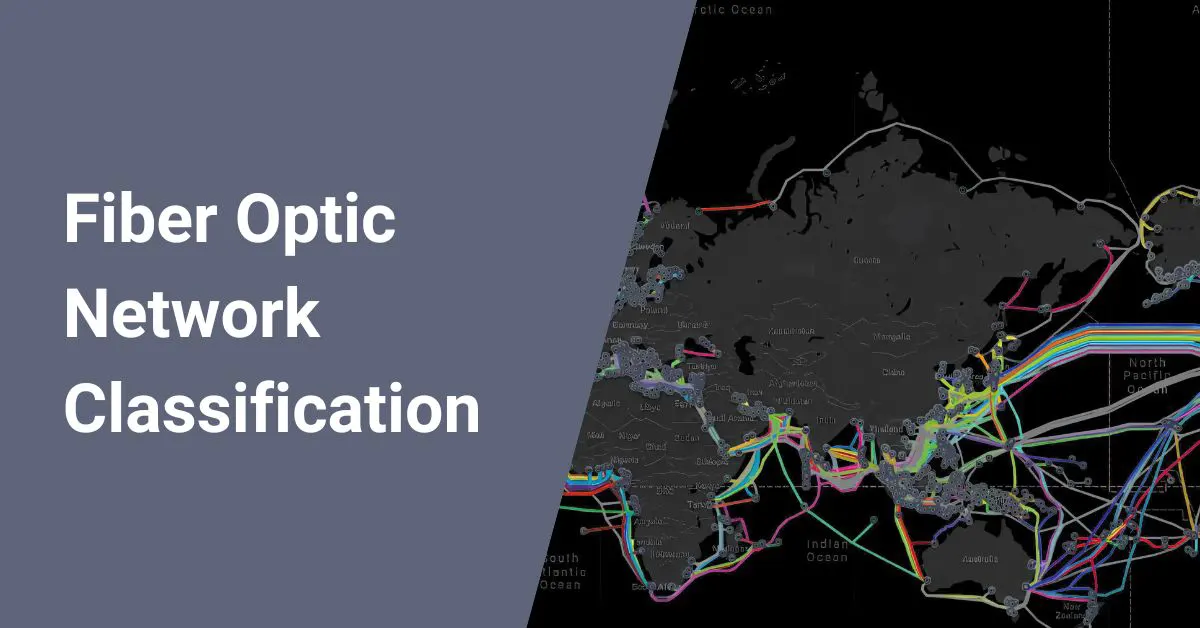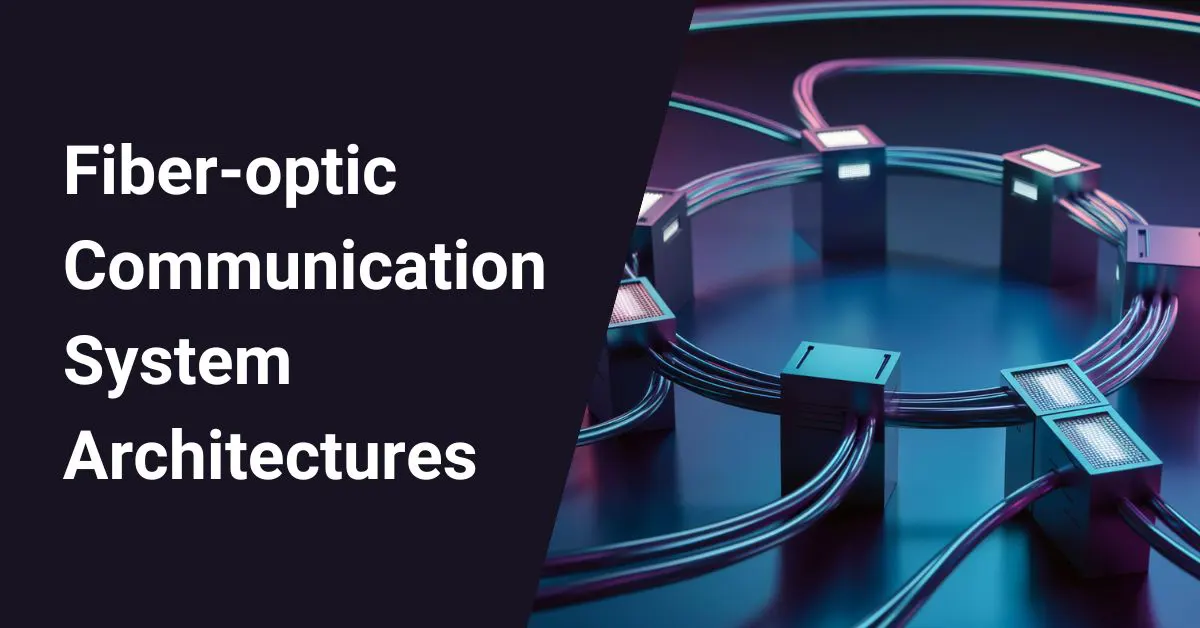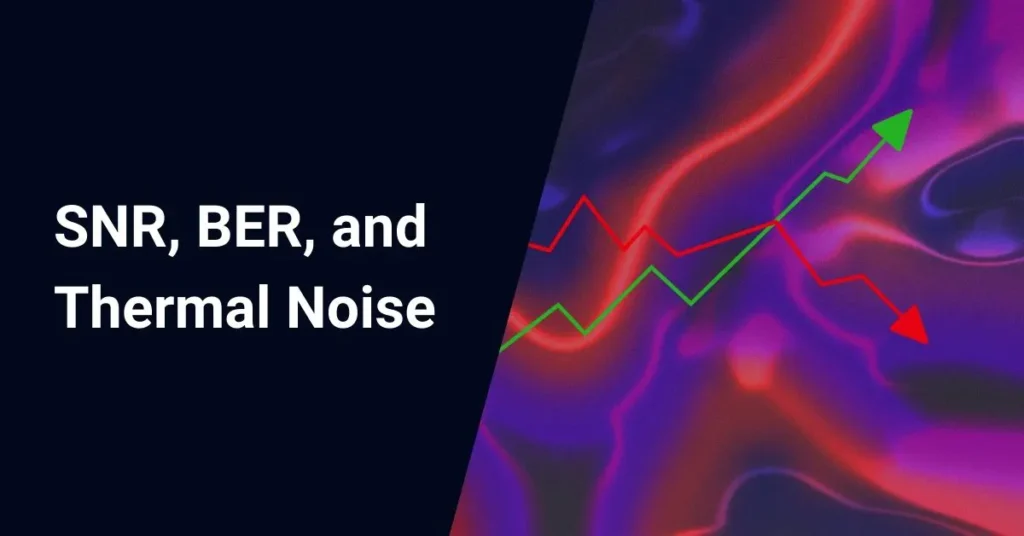In the telecommunication world, optical networks play a crucial role in transmitting vast amounts of data across vast distances. These networks are mainly classified based on the area they serve, and there are four main types:
- Submarine cable network
- Optical core network
- Optical metro network
- Optical access network
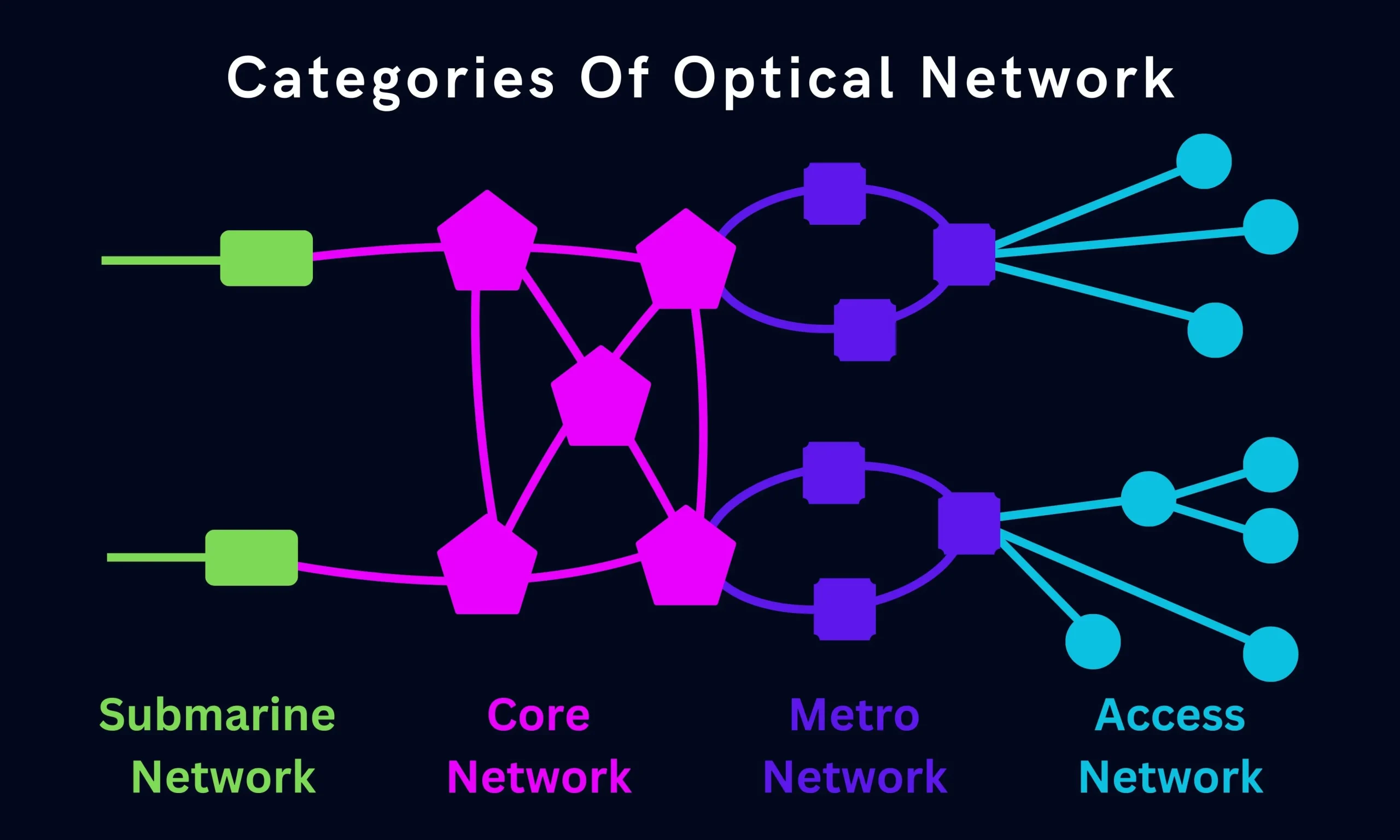
Table of Contents
Submarine Cable Network
The optical submarine cable is a critical component of the global telecommunications infrastructure. It is designed to withstand the harsh conditions of the deep waters.
These underwater cables are extensively tested to ensure they can be installed and repaired even in the worst weather conditions without any impairment of their performance or reliability.
Underwater Optical Fiber Cable Categories
There are three main types of underwater optical fiber cables:
- Marinized Terrestrial Cable (MTC): These cables are designed for non-relay applications and have become more common in recent years. They are often used for crossing lakes and rivers.
- Repeaterless Submarine Cable: Also known as unrepeated cables, these submarine links only contain optical fiber and nothing else underwater, making them a more cost-effective solution for network extensions, such as connecting to islands. These cables can be submerged without repeaters for shorter distances.
- Repeatered Submarine Cable: These cables are developed for deep-sea transoceanic systems, and repeaters are used to transmit optical signals and deliver electrical power to wet plants. They are designed for long-haul, high-speed, cross-ocean communication systems. They can be used in all underwater applications, mainly for deep waters on lengths requiring submerged repeaters.
The table below outlines the key characteristics of these three types of underwater optical fiber cables:
| Cable Type | Depth Range | Typical Use |
|---|---|---|
| Marinized Terrestrial Cable (MTC) | Shallow waters | Crossing lakes and rivers |
| Repeaterless Submarine Cable | Shallow and deep waters | Network extensions, up to 300 km |
| Repeatered Submarine Cable | Deep waters | Transoceanic systems, long-haul high-speed communication |
The choice of cable type depends on the specific requirements of the project, such as the depth of the water, the distance to be covered, and the need for repeaters.
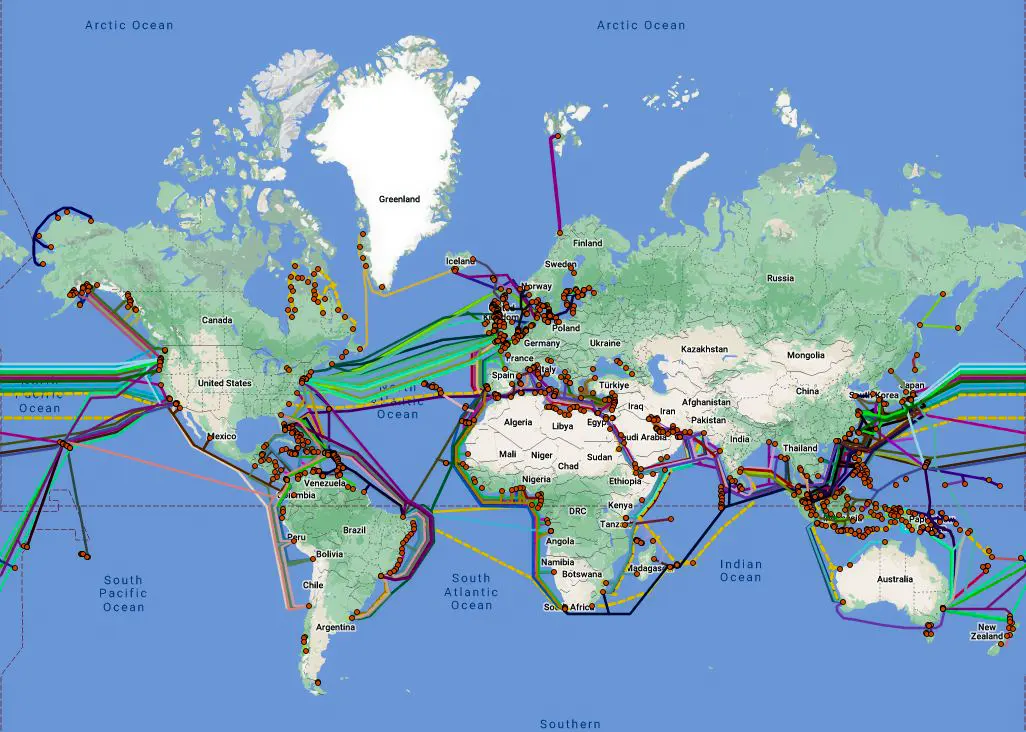
Standards and Regulations
The International Telecommunication Union (ITU) has defined a set of standards and recommendations for optical fiber submarine cable systems, including:
- ITU-T G.970 to G.979: This series of recommendations covers various aspects of optical fiber submarine cable systems, such as general features, characteristics, and test methods.
- ITU-T G.975 and G.975.1: These recommendations specify forward error correction for submarine systems, ensuring reliable data transmission.
- ITU-T G.978 and G.979: These recommendations define the characteristics of optical fiber submarine cables and monitoring systems, respectively.
These standards and regulations help ensure the quality, reliability, and interoperability of submarine cable networks worldwide.
Optical Core Network

Optical core networks, also known as Wide Area Networks (WAN) or Interchange Carrier (IXC) public networks, are long-haul networks that span large physical distances.
These networks provide next-generation, enterprise-scale speed and data capacity to support the most demanding operational requirements. That allows organizations to transfer data quickly over long distances with massive data transmission abilities.
Optical/WAN networks are typically connected via radio or telephone links rather than dedicated lines. They use optical fiber cable or satellite transmission and packet switching methods or message switching methods.
These networks are often established with leased telecommunication circuits. They are used by businesses, schools, and government entities to relay data to clients, suppliers, students, staff, and buyers from various locations around the world.
Long-haul networks link major population centers within continents, spanning distances typically from 1,000 km to more than 2,500 km.
Optical Metro Network

Optical metro networks, also known as edge/regional/metropolitan networks, are optical networks that span distances up to several hundred kilometers, typically serving large, concentrated metropolitan areas.
These networks bridge the space between long-haul and access networks. It interconnects a full range of client protocols from enterprise/private customers in access networks to backbone service provider networks.
Optical metro networks are based on synchronous digital hierarchy (SDH) or synchronous optical network (SONET) ring architectures, where smaller rings aggregate traffic onto larger core inter-office (IOF) rings that interconnect central offices.
These networks are characterized by their long transmission distances and high transmission speeds. They utilize the power of optical fiber to transmit information across metropolitan and regional areas.
The endpoints of an optical metro network can be urban centers, office computers, or telecommunication systems across the globe.
By connecting the various components of the telecommunications infrastructure, optical metro networks play a crucial role in ensuring seamless data transmission and communication across diverse networks and geographical regions.
Optical Access Network

Optical access networks (OANs) are the “last mile” or “first mile” networks that connect subscribing customers to the network provider’s outermost switching office/exchange.
These networks are optimized for the set of bidirectional interactive services usually offered to residential and small-to-medium businesses by the local exchange.
The optical access method includes two main technologies:
- Single Star (SS) technology (Point-to-Point): This approach connects the service node to the user through a dedicated optical fiber link.
- Passive Optical Network (PON) technology (Point-to-Multipoint): This technology is more widely used in OANs, where the service node is connected to multiple users through a shared optical fiber network.
OANs use optical fiber to transmit information and can offer high-quality, two-way interactive services to their customers.
These networks are composed of an Optical Line Terminal (OLT) installed by the communications carrier or service provider and the Optical Network Unit (ONU) installed in the subscriber’s office or household.
In some cases, when used for DSL, the OAN is split into optical distribution and customer-facing access, where the optical distribution is terminated in the ONU, and customer-facing access uses copper-based twisted pairs.
The key purpose of OANs is to provide bidirectional interactive services to residential users and businesses in the subscriber loop, delivering high-quality 2-way interactive switched voice or data communication within a local calling area.
Conclusion
Optical networks are the backbone of modern telecommunications, with each category serving a specific purpose and geographical area.
Submarine cable networks transmit data across vast ocean expanses, optical core networks carry high-speed, long-haul traffic, optical metro networks interconnect regional hubs, and optical access networks bring fiber-optic connectivity to end-users.
These networks leverage the power of optical fiber technology to offer unparalleled data transmission speeds, reliability, and capacity, connecting people, businesses, and organizations across the globe.
As the demand for data and connectivity continues to grow, the various categories of optical networks will play an increasingly crucial role in shaping the future of global communication.
FAQ
What are the 3 types of fiber optic cable?
There are three main types of fiber optic cables commonly used:
➤ Single-mode fiber (SMF): This uses a thinner core and a single light source (laser) for long-distance, high-bandwidth applications (core networks).
➤ Multimode fiber (MMF): This uses a larger core and multiple light sources (LEDs) for shorter distances and lower bandwidth applications (data centers, metro networks).
➤ Plastic Optical Fiber (POF): This is a less common option used for very short distances and lower data rates (home networks).
Is multimode fiber still used?
Yes, multimode fiber is still commonly used in applications where data needs to travel shorter distances (within a building or data center), and high bandwidth isn’t the critical factor. It’s also generally less expensive than single-mode fiber.
Which type of Fibre optic cable is mostly used?
Single-mode fiber is becoming increasingly popular for its ability to handle long distances and high bandwidths. However, multimode fiber remains widely used for shorter-distance applications due to its lower cost.
What is a full fiber network?
A full fiber network refers to a network where fiber optic cables are used for the entire communication path, from the service provider’s core network to the end user’s premises (replacing traditional copper cables in the access network). This offers significant advantages in speed, reliability, and capacity.
What is the biggest downside to fiber optic cabling?
While offering numerous advantages, fiber optic cables can have some drawbacks:
➤ Cost: Installation and equipment for fiber optic networks can be more expensive than traditional copper cabling.
➤ Fragility: Fiber optic cables are more delicate than copper cables and require careful handling during installation and maintenance.


